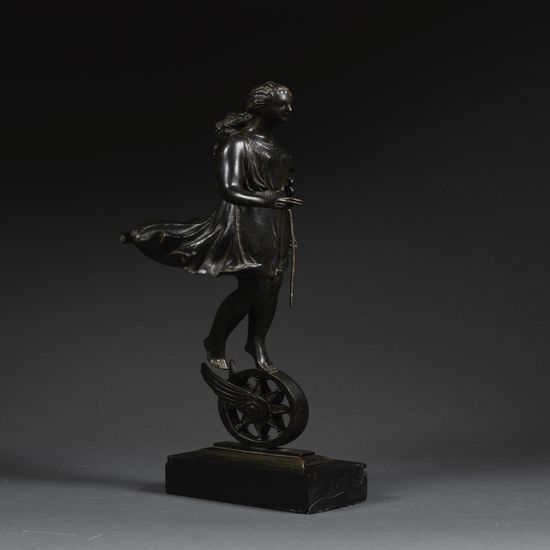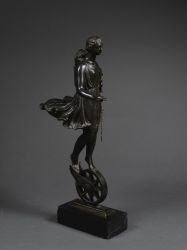Armand Martial
It was in Rome that he met his lifelong companion, Marie-Louise Dardun, a young French teacher who had escaped from teaching in France, whom he married in 1921.
With Michel Roux-Spitz, he created his first monumental work: a large decorative vase in bronze and stone, which was awarded a prize at the International Exhibition of Decorative Arts in 1925, and also caryatids, the "Canéphores", acquired by the State and offered to the Museum of Fine Arts in Nice at its inauguration. It is this monumental spirit that continues to assert itself with a number of commissions from the State:
In 1936, after a national competition, he won the realization of his greatest work: the equestrian statue of the King of the Belgians Albert 1st, the soldier-king, which stands at the entrance of the Queen's courtyard, Place de la Concorde in Paris, on a high base where two bas-reliefs evoke Belgium and the war.
It was the Great War, and another one occurs, just as destructive, though in a different way. These were the dark years, the broken momentum. Armand Martial made only a few busts, and devoted himself to teaching at the School of Fine Arts. The terminal of Le Bourget having been largely damaged by the bombardments, it is rebuilt by the same architect, Georges Labro. For the central part, in advance, Armand Martial sculpts three large statues symbolizing the continents.
Elected Member of the Institute (Academy of Fine Arts) in 1951, he was also an officer of the Legion of Honor, president of several societies and associations.
|



